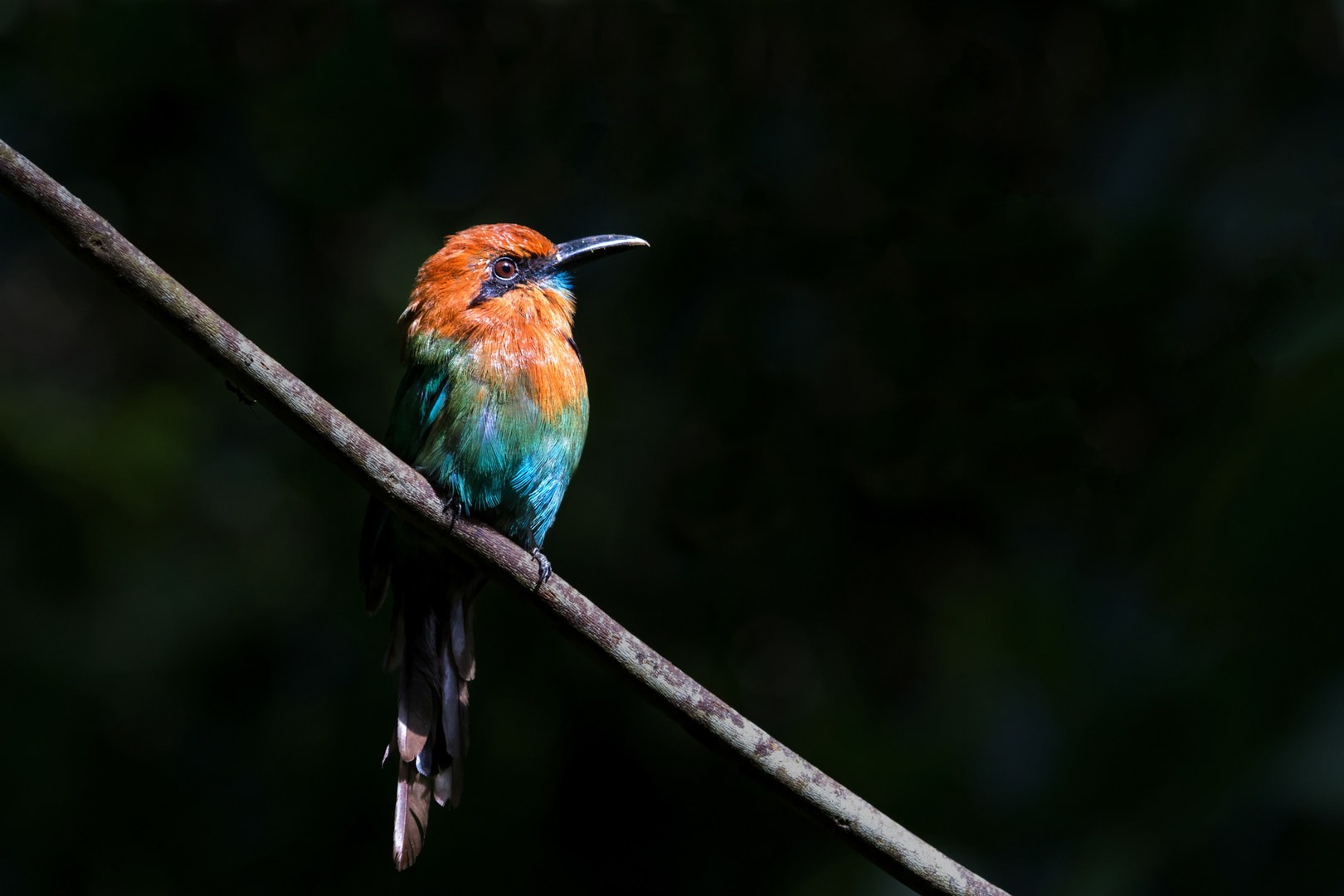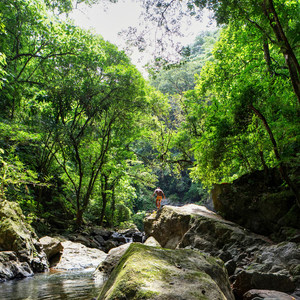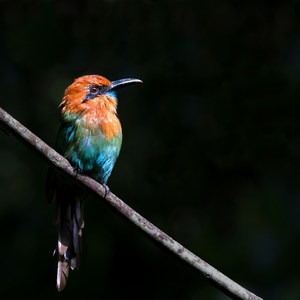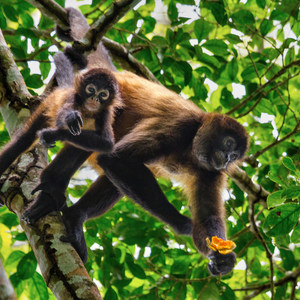You are here
Panama is famous for the Panama Canal, which is an impressive engineering marvel. However, the Panama City area offers much more than that. With incredible biodiversity, there are many hikes that offer the opportunities to observe tropical birds and other species. The native Embera people offer tours to visit their villages and learn about their way of life, in contrast to the large metropolitan area of Panama City, which is also rich in history. These adventures can make for a great four or five day trip to the Panama City area.
Panama can be a year-round destination. The rainy season is in summer months in the Northern Hemisphere, though many locals refer to that season as winter or monsoon season. The weather is milder in winter and spring months with the added bonus of wintering and migratory bird species being present. U.S. dollars are accepted throughout Panama, and Uber works well in the city –though note that traffic can be terrible, especially in late afternoons on weekdays in the financial district.
A visit to the Panama Canal is almost mandatory while visiting Panama. The locks at Miraflores are the first of three locks to cross the canal from the Pacific to the Atlantic side. Ships wait their turn in the Gulf of Panama and then navigate under the Bridge of the Americas and the Centennial Bridge. The Miraflores locks raise them in the first step, and then the ships navigate to the second step at the Pedro Miguel locks. The whole process works through gravity by allowing water to flow and lift ships to the level of the river. The building in Miraflores includes a terrace to observe the ships passing through, a museum showing the history of the canal, and a cafeteria. The cost per visitor is $15.
The history of the canal is quite interesting. It is not only an engineering marvel, but many challenges had to be overcome to complete it, including economic, political, and environmental. For example, yellow fever was a big contributor to the French’s failure in their initial attempt to complete the canal. Medical and hygiene advances, including understanding that the disease is transmitted by mosquitoes, was one big success factor in the American-led construction of the canal.
Barro Colorado Island
To build the Canal, the Chagres River was dammed, raising the level of the water to allow ships to navigate between oceans. This turned Barro Colorado ("red mud") mountain into Barro Colorado Island. The Smithsonian Tropical Research Institute was established on the island, and it hosts dozens of scientists that study nature in the island. Some have called the island the most studied patch of tropical rainforest in the world, for good reason. Guided tours are offered, which make it possible to hike on the island and learn about the many species of flora and fauna that inhabit it. Reservations need to be made months in advance, though, and cost $100 per adult. This can be an excellent all-day trip.
Pipeline Road
Another location to observe nature, especially birds, is Pipeline Road. An oil pipeline was built in the mid 1900s, but it was never actually used. The road to access and maintain the pipeline was also built, and it now provides great and easy access to the rainforest. It is possible to walk or bike the full 17 kilometers, or you can just walk a portion of the road while observing birds, monkeys, sloths and other species. There is no cost to access the road, but for $30 visitors can access the Panama Rainforest Discovery Center, where hummingbird feeders are always busy and a 40-meter observation tower extends above the forest canopy. This makes for an excellent half-day trip with an early start –before sunrise, when birds tend to be most active.
There are several other hiking trails to go bird watching at Camino de las Cruces, Soberania and Bosque Protector Arraijan National Parks. Additionally, without having to leave the city, the Metropolitan Natural Park offers great opportunities to observe birds such as toucans and trogons. Both are beautifully colorful and fairly common. The best time to start a bird watching hike is before sunrise.
Embera Village
Another day trip that is very much worth doing is visiting an Embera village. The Embera people inhabited the area around the Chagres River well before the river was dammed to form the Panama Canal. They used to live off of hunting, fishing and agriculture. Now conservation efforts have prohibited hunting and limited agriculture, so they rely heavily on tourism to survive while preserving their culture. A visit to the village offers a view into their way of life. Additionally, navigating the Chagres River on wooden dugout canoes and hiking to a wonderful waterfall makes this an excellent whole day excursion.
Another day trip while visiting Panama City is navigating Panama Bay. Whales can be observed in the bay, in contrast to the large ships waiting for their turn to cross the Panama Canal. It is also possible to visit the islands of Taboga, Tabogilla, and Uraba.
In between hikes and excursions to the forest around the city it is possible to visit Panama City, which is rich in history. The oldest part of the city is Panama Viejo ("Old Panama"), declared a World Heritage Site in 1997. This is the site of the original city, which was founded in 1519, making it the first permanent European settlement on the Pacific Coast of the Americas. The city was burned down by pirate Captain Morgan in 1671. The city was well protected by walls on the Pacific side, but Captain Morgan surprised the city militia by crossing the rain forest and attacking from the Caribbean side.
The city was then rebuilt a few miles from the original site, resulting in what is now known as Casco Viejo. There is a very characteristic colonial architecture that contrasts with the high rises in the new part of the city. Some of the original buildings in Casco Viejo are still standing along with churches, squares and museums that are now surrounded by restaurants and hotels. This area also has more recent history as it was a stronghold of General Noriega during the U.S. invasion in 1997.
The area around Panama City can be an excellent setting for a four- or five-day trip, combining excursions in nature with visits to the Panama Canal and the city, which is rich in history.








Comments
Sign In and share them.